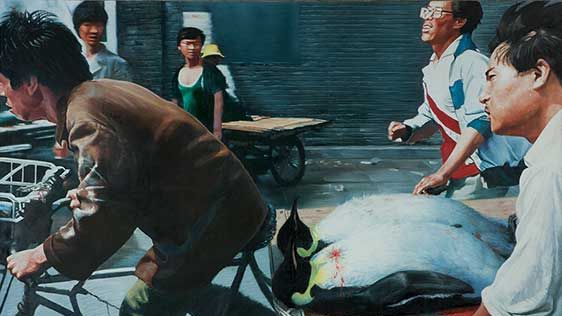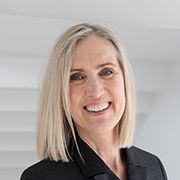
Press release -
Right is Wrong / Four Decades of Chinese Art from the M+ Sigg Collection
Welcome to a press preview Thursday 5 June at 10:00. The curators Pi Li, Sigg Senior Curator M+; Lars Nittve, Director M+; Katarina Pierre, Director Bildmuseet; and the artist Hu Xiaoyuan will participate.
Opening 8 June at 14:00. The exhibition runs until 12 October 2014.
The exhibition Right is Wrong introduces art from four decades and presents the rapid emergence of contemporary art in China. Starting in the 1970s, we follow the development of contemporary art beginning with groups of artists such as the No Name Group and the Stars Group, via the events on Tiananmen Square in 1989, up to the incredibly vibrant art scene of today. Comprising almost 80 works of various formats and mediums: painting, photography, sculpture, video, installation and performance, Right is Wrong presents a selection of seminal pieces by key figures inof contemporary Chinese art history. The works are part of one of the world’s foremost collections of Chinese contemporary art; the M+ Sigg Collection from M+, the museum for visual culture in Hong Kong, presently under construction and due to open in 2017.
Right is Wrong is an extremely concentrated contemporary art history narrated through a number of key works. It gives us the opportunity to look at the connections between art and society from the specificity of recent Chinese history by showing the development of the art scene in relation to the socio-political development in China. Right is Wrong raises questions about the relationship between art and contemporary life and contemporary history. It inquiresenquires about how art reflects or mirrors a society and simultaneously influences it, about how art not only reacts to and comments on events and incidents, but also is an agent shaping our future. This exhibition raises the question: what can art do? The relationship between art and society, art and ideology, art and politics, is the underlying theme which runs through Right is Wrong.
Questions concerning the conditions for artistic practice, the freedom of expression, the freedom of art, its prerequisites and its limitations are foregrounded by Right is Wrong. Can art challenge existing structures of thought by asking the question: why not? Why not imagine another way of seeing the world – another way of being in the world? Art can offer a distorted mirror where things are turned upside down and set agreements are temporarily suspended; where right is wrong, and wrong is right; an alternative reality where hierarchies, systems of values and norms are turned to their opposites, if only for a moment. Right is Wrong proves arts’ ability to question, challenge and bring about change and how, in art and culture, we can articulate and express questions of urgency in our contemporary moment.
Right is Wrong is organised as ain co-production between Bildmuseet Umeå University and M+, West Kowloon Cultural District, in Hong Kong, and the exhibition premieres during the European Capital of Culture Year in Umeå 2014. The exhibition is curated by Pi Li, Sigg Senior Curator M+ with; Lars Nittve, Director M+ and Katarina Pierre, Director Bildmuseet in collaboration with Uli Sigg. A catalogue accompanies the exhibition.
Image above:
Wang Xingwei,
New Beijing, 2001. Oil on canvas. Courtesy of the M+ Sigg Collection
Further information
Director Katarina Pierre, Bildmuseet
katarina.pierre@bildmuseet.umu.se
+46-90 786 9632
For access to press images etc., please contact
Helena Vejbrink, press and communications officer
helena.vejbrink@bildmuseet.umu.se
+46-90 786 9073
Related links
Topics
Categories
Bildmuseet, Umeå University, exhibits contemporary international art, photography, architecture and design, along with art historic retrospectives. Existential, political and philosophical issues are key to the programme. The exhibitions are complemented by guided tours, lectures, seminars, films and performances. Workshops and educational activities inspire creativity. Since 2012 Bildmuseet has been housed in an acclaimed building by the shores of the Ume River, right next to Umeå Academy of Fine Arts, Umeå Institute of Design and Umeå School of Architecture.
Umeå University is one of Sweden's largest institutions of higher learning with over 32,000 students and 4,200 employees.
